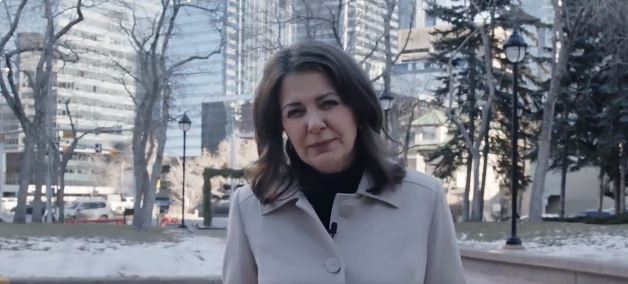Alberta Premier Danielle Smith: “Renewable energies? In the frost they are not enough”
EDMONTON – Can you rely on renewable energy when temperatures drop this much? No, according to Alberta Premier Danielle Smith. “Right now, wind is generating almost no power. When renewables are unreliable, as they are now, natural gas plants must increase capacity to keep Albertans safe,” she wrote on Friday on social media after the Province’s grid operator launched an appeal to consumers inviting them to save electricity to protect the system.
The next day, following a second grid advisory warning of potential rolling blackouts, Saskatchewan Premier Scott Moe wrote that the excess power he was sending to Alberta was coming from natural gas-fired power plants and coal-fired, i.e. “the ones the Trudeau government is telling us to close (which we won’t),” Moe wrote on X – Twitter, referring to the federal government’s plan to reach zero emissions by 2050.
At the time, temperatures across much of the province were approaching -40°C.
Alberta’s grid operator partly blamed the crisis on two natural gas generators that weren’t working, as well as a lack of renewable energy produced due to light winds and a lack of daylight this time of year.
Michelle Rempel Garner, a Conservative MP for Calgary, wrote on her blog that if the electricity system is already buckling under pressure, it likely won’t be able to handle “additional extreme demand created by Liberal regulations.”
But a spokesperson for Federal Environment Minister Steven Guilbeault’s office said in an email to The Canadian Press that the federal government has always said that “reliability, along with affordability, is one of the driving forces behind the way the regulations will be designed. The regulations would never put the province in a situation where they did not have a reliable baseload, and it is why we are making provisions so that fossil fuel burning plants can run without carbon capture technologies during peak usage or in situations of emergency. To say we want to ‘shut down plants’ is simply not the case.”
Andrew Leach, an energy economist at the University of Alberta, said Smith and Moe appear to frame the debate as a choice between natural gas and renewable energy. In reality, he argues, a mix of energy sources is needed, including better connections with other jurisdictions. Modellers know there will be days when demand is high and renewable generation is low, he said. Backup planning must happen in advance, he noted, and it is the system operator’s job to do so. “Whether it’s natural gas, nuclear, import capacity, battery storage, geothermal … There’s nobody that’s arguing against that,” Leach said.
Jason Wang, senior energy policy analyst at the clean energy think tank “Pembina Institute:, said Alberta needs to move forward with changes to market regulations so that renewable energy storage can play a role. most important role. Wang said that last Saturday, for example, the batteries were able to provide power for the first time during a grid event. “Storage was able to buy us a few extra hours without needing a grid alert,” Wang said, adding that natural gas production also faces limits during extreme cold, even if the generators of the Alberta are better prepared for this scenario than other facilities.
Alberta Electric System Operator (AESO) spokesperson Leif Sollid said consumption dropped by 100 megawatts seconds after people received the alert Saturday evening, and demand dropped another 100 MW in the span. of a few minutes. “That was enough to offset the deficit we were facing and that prevented rolling outages,” Sollid said in an interview Sunday. The AESO declared another grid alert Sunday afternoon, urging Albertans to reduce electricity use to essential use until 8 pm to avoid the possibility of rotating outages.



